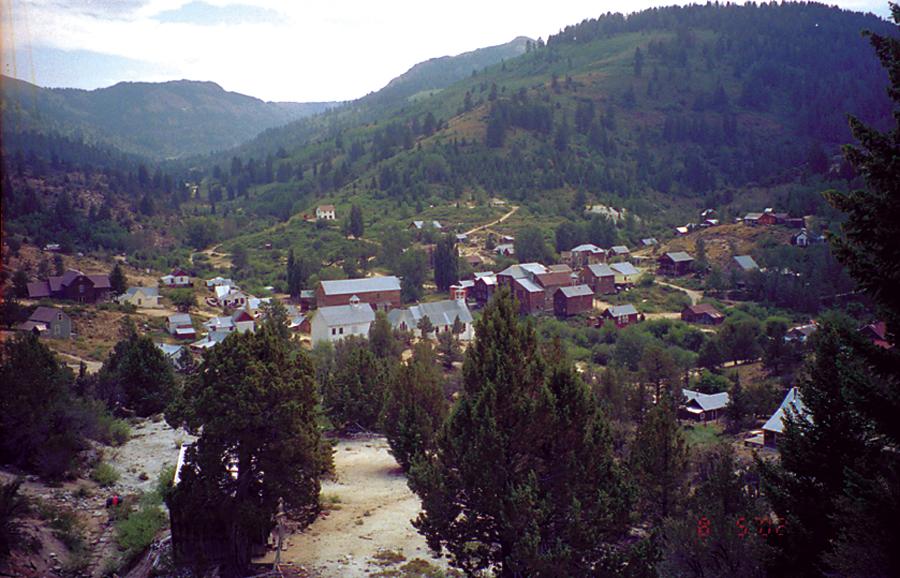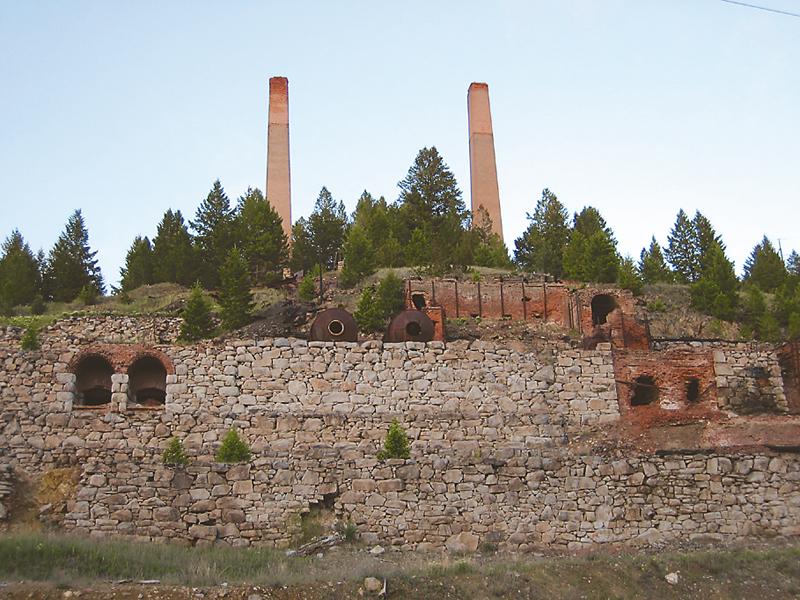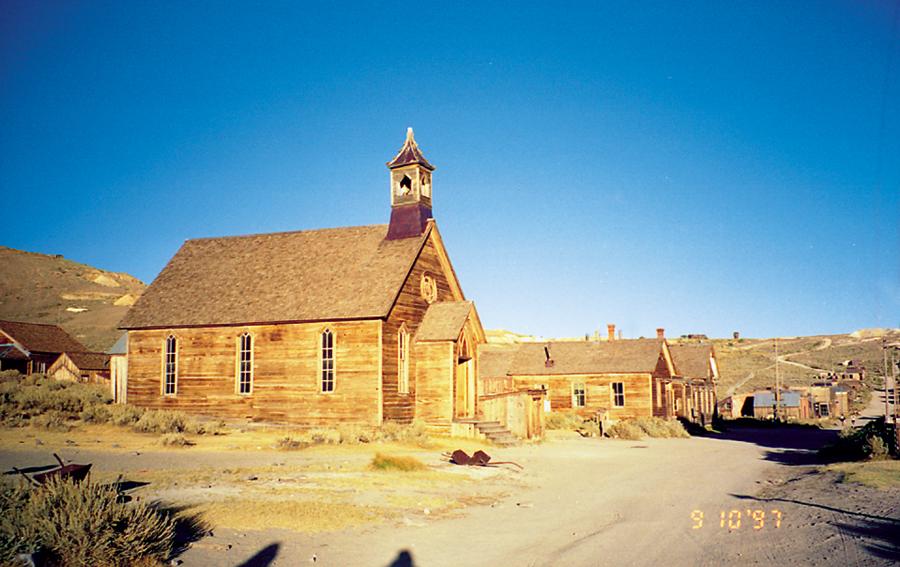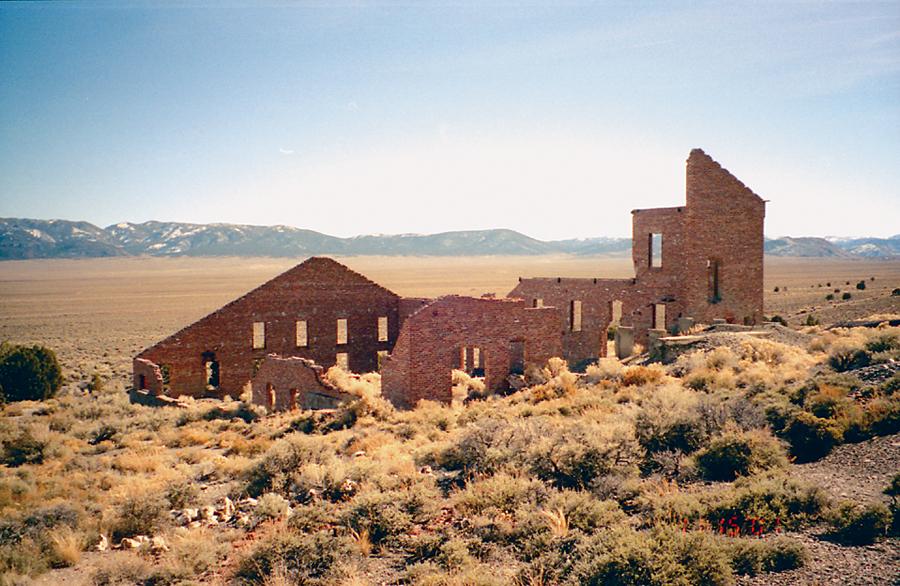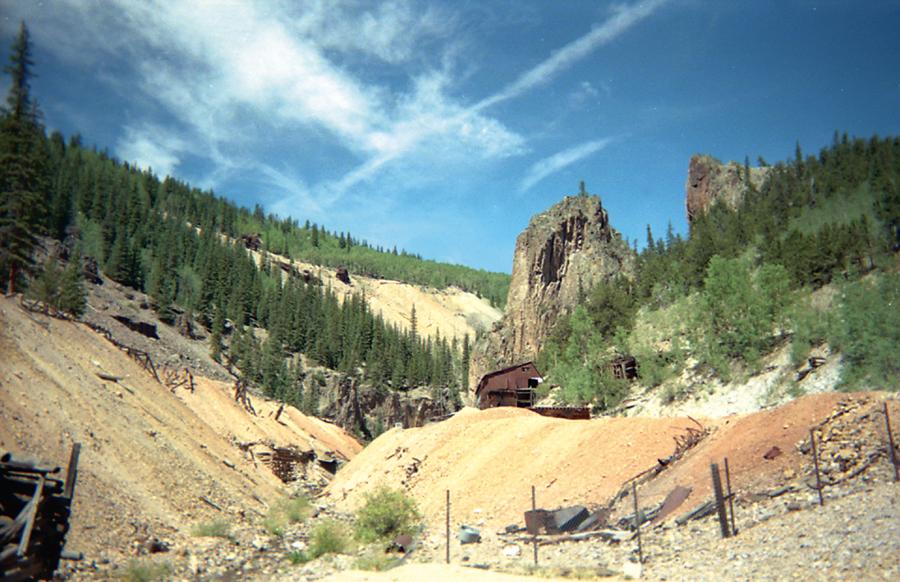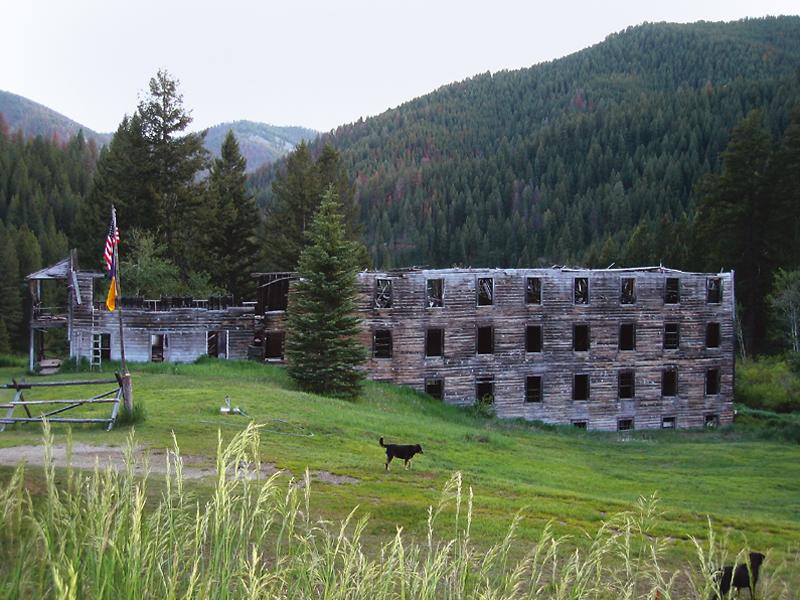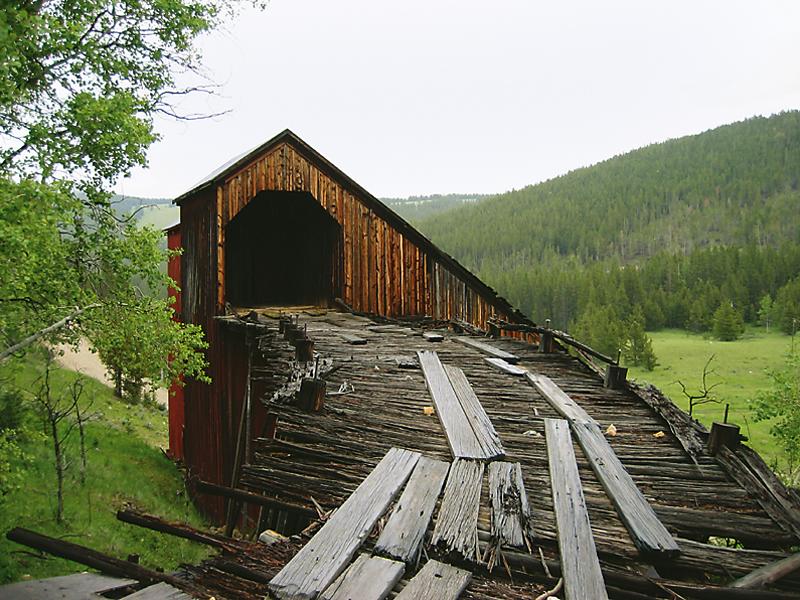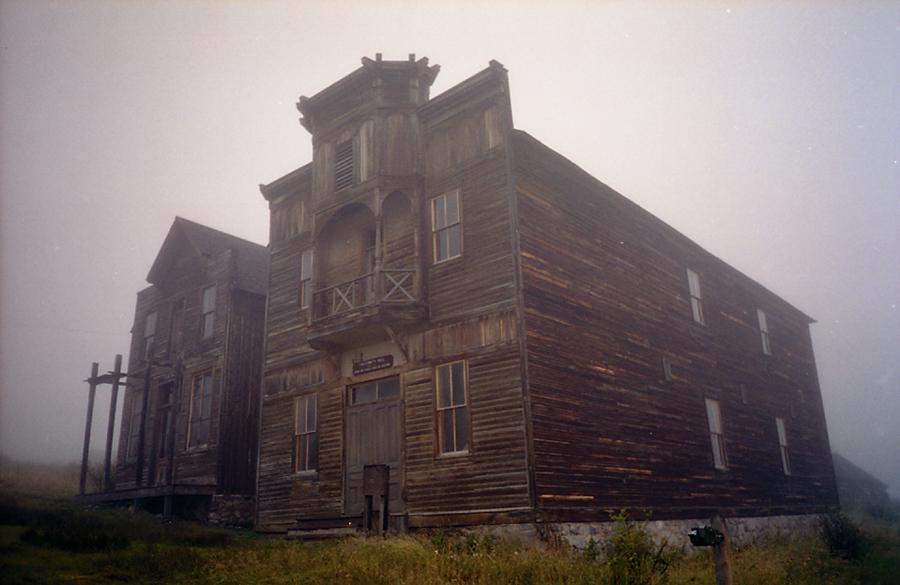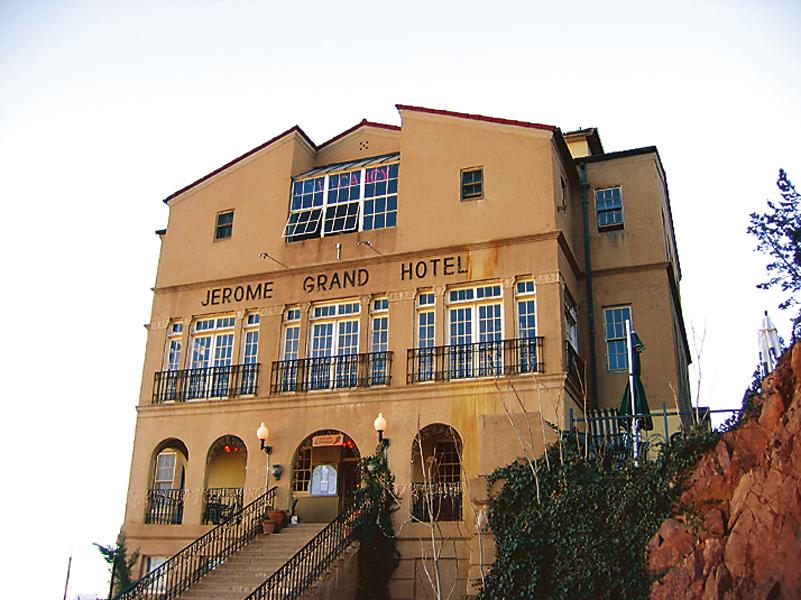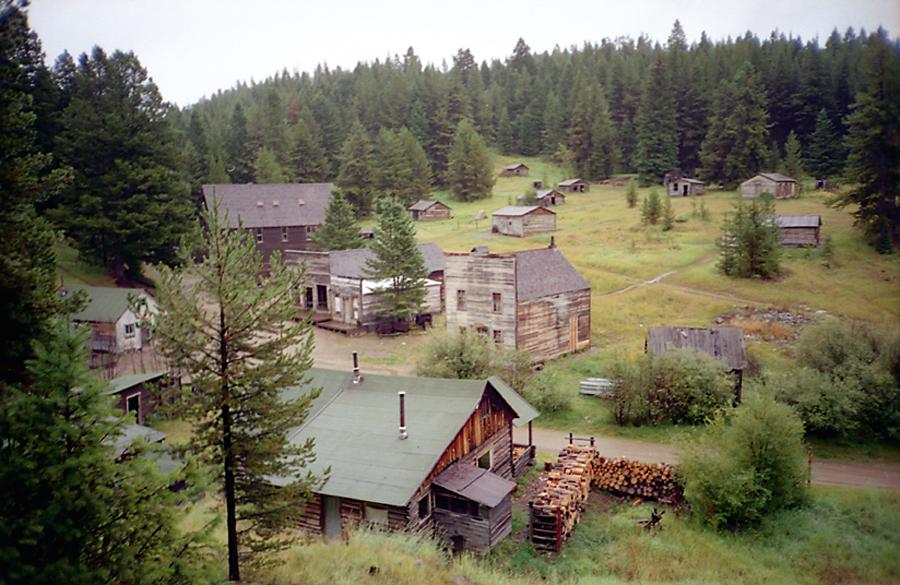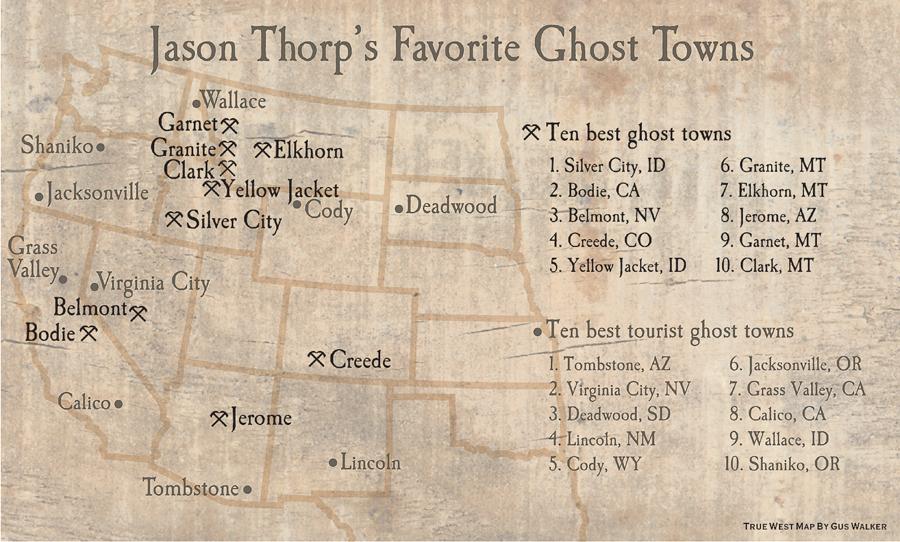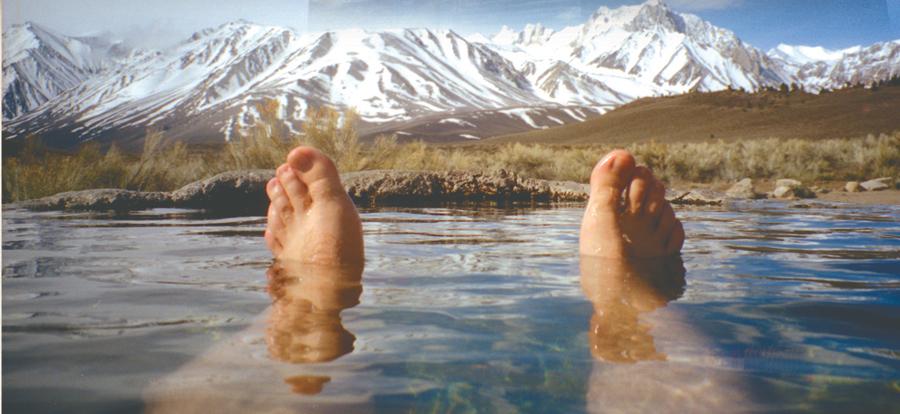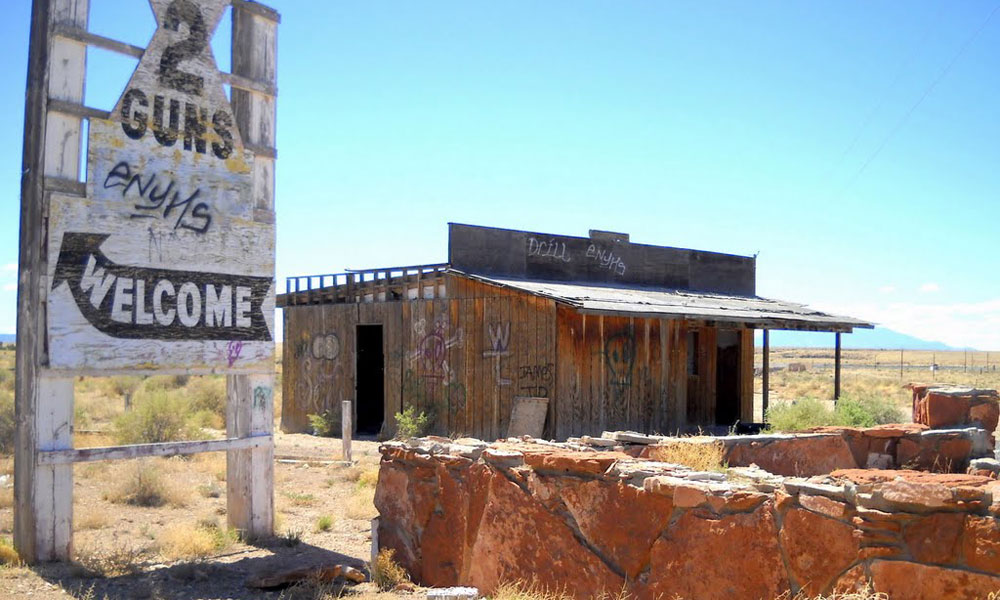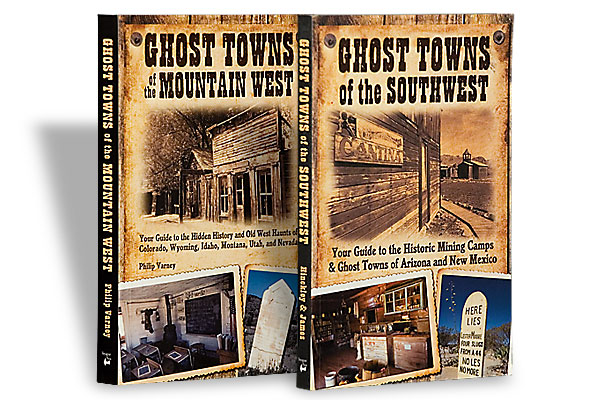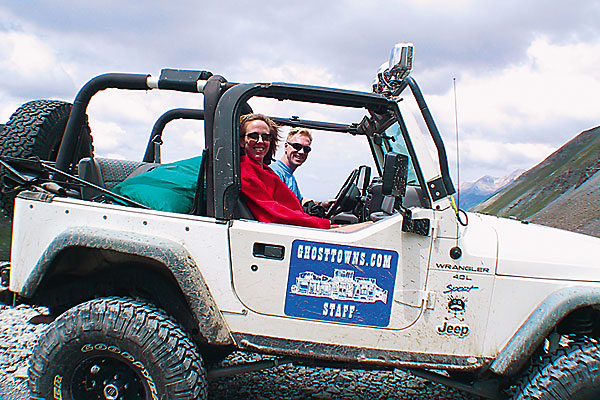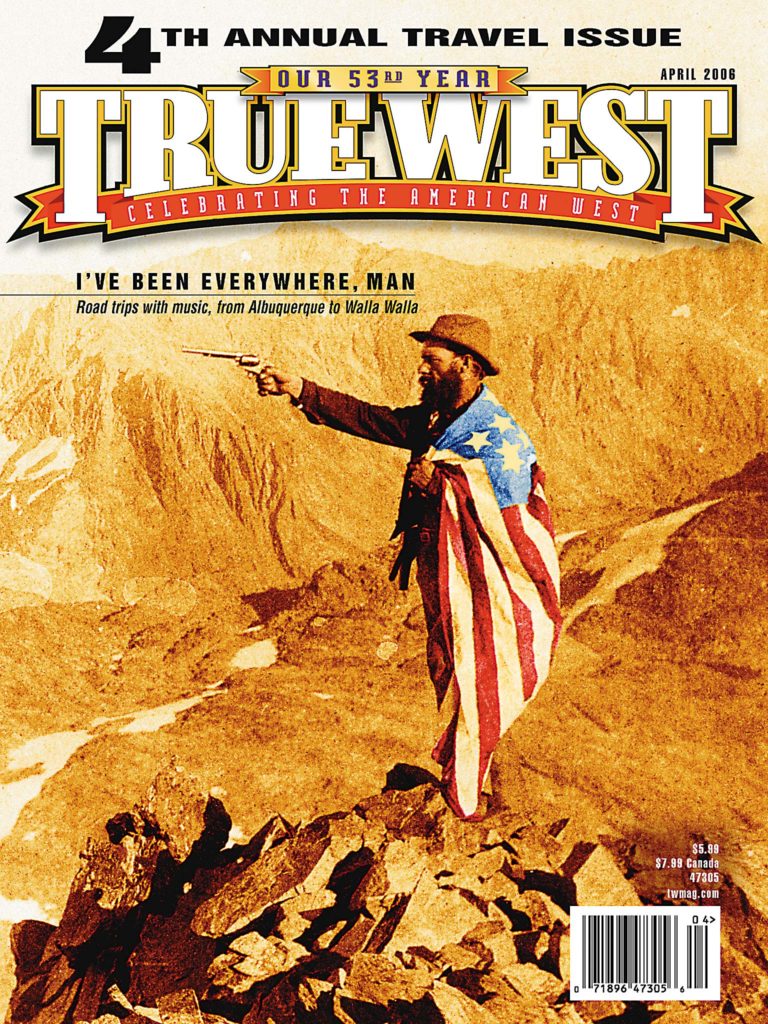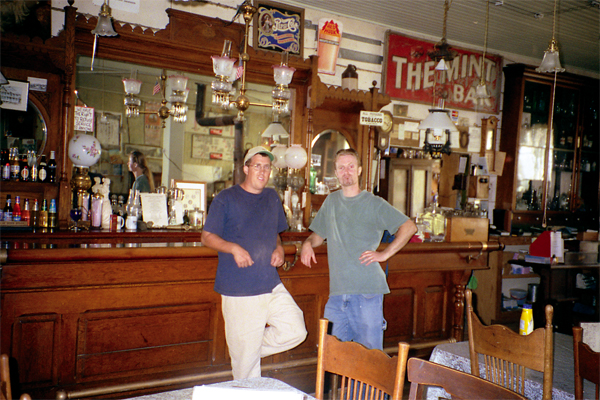 He’s True West Maniac #94, and after just a minute with this 32-year-old construction worker, it’s obvious why.
He’s True West Maniac #94, and after just a minute with this 32-year-old construction worker, it’s obvious why.
“I have been fascinated with the Old West, antiques, ghost towns and anything that connects me with the past as far back as I can remember.”
Jason Thorp isn’t kidding. For years, he has haunted the ghost towns of the Old West with the passion of a man who knows the past has secrets to share.
“It’s those abandoned towns, homesteads, mines, mills and
cemeteries that I find to be the most intriguing part of our country’s
history,” he declares. “I have been to most all the ghost towns in the great Northwest down through southern New Mexico and Arizona. I have yet to explore Canada, Alaska and some of the Midwest. Usually I just run out of time.”
He runs out of time for a very simple reason: “Traveling has always been a passion, it’s an addiction, really. I love to drive and take the longest route and as far off the interstates as possible,” he says. “My wife of seven years won’t let me drive on trips anymore because we never get to our destination on time, if at all.”
But sometimes he leaves his lady, Rae, at home in Gresham, Oregon, and takes off with friends or a brother-in-law who share his fascination for the people and places of the Old West. Oh yes, he also takes along lots of books and old maps.
“There’s not a lot of newer books about great old ‘true ghost towns,’” he says, defining true ghost towns as “the totally empty towns with old churches, halls, schools, houses and, of course, the grand old mills.” He says most of those places are now on private property, have been
reinhabited or the towns have simply disappeared—“evaporated into the hills and rivers.”
Jason does trust author Lambert Florin, but all of his books were written in the 1950s and ’60s, and “a lot has changed in the 40-50 years since he was the grand explorer of the Old West.”
But he takes Florin’s books with him on the road anyway, because “they are a wonderful guide.” Besides, Jason has figured out a surefire way to “update” that information when he approaches a prospective ghost town; “If you take the time to stop and talk to the locals, most of them are happy to tell you if it’s worth the 50-mile trip up the gravel and dirt road,” he says.
Jason takes as much time as he needs with the locals because he loves meeting new people. “An adventure on the road is only as good as the people who meet, stop the party wagon and say hello, you never know who or what you’re gonna miss,” he says. And, you never know when that “stranger” is a fellow GTE—Ghost Town Explorer—who has great secrets to share!
Besides, it was the grit and determination of the pioneers who settled the Old West that turned Jason on in the first place, people he describes as “determined to find a new, rich lifestyle of freedom, independence, salvation, self government and, of course, wealth—no matter who or what got in the way.”
You get the impression right away that Jason doesn’t miss much, and for that, you have to thank his late father Bob, who raised his son around Mt. Hood in Oregon. “My father was a great hunter, fisherman and
outdoor adventurer,” Jason says. “So I guess a lot of my passion comes from him. Whether he was sitting in a duck blind hunting, lounging in his fishing boat or hiking in the canyons for pheasant, it didn’t matter if he got anything as long as he was free. There is no better high than feeling that pure fresh air in your lungs or the sun waking you up first in the morning with no alarm clock ringing in your ear.”
With that knowledge in his soul, Jason and a friend backpacked through Europe when he was 19 and it “absolutely changed my life—the places we saw, the cultural changes and experiences and, most
important, were the people we met. There is no teacher or book that can explain the experience of living and seeing and touching this on your own.”
And so when he went out exploring his own country, he found his imagination was ignited. “It’s this imagination that drives me to explore these forgotten places,” he says. “To see where it all began or ended. How much has survived, and how much is lost forever? There is so much to see and learn. All you need is a little determination, dedication, curiosity, open eyes and ears, a little time and plenty of gas!”
How to Become a Ghost Town Maniac
Jason suggests ghost town novices get a taste of the Old West in what he calls “Tourist Ghost Towns,” such as Tombstone, Arizona, or Virginia City, Nevada (see his suggestions on the map). These are places “every Western enthusiast must visit,” he says, adding “I’ve had a great time in both towns and appreciate their preservation.”
But, he stresses, “to really explore the grandest old towns, you have to do your research and have a four-wheel drive vehicle. Expect the long traverse across the canyons and deserts, expect the disappointment of arriving to find a no-trespassing sign or to find nothing at all. You can only wonder what it was like in its heyday and why it’s now totally gone.”
What you shouldn’t expect is to find “great old covered wagons, ore carts or the trusty whiskey bottle because it’s already been looted.”
Jason has even found wonderment in “controlled ghost towns” like Bodie, California; “Its grandeur is absolutely amazing—it’s probably the most complete and well preserved ghost town left.”
Bodie was once a booming town of 10,000 that produced some $25 million in gold and silver, but now it’s a government-owned tourist attraction. Jason declares it “absolutely well worth the drive and free to enter.” (The ghost town even has its own website: www.bodie.net)
“The photo opportunities are endless,” he reports. “Everything from the poker and pool tables in an old saloon, to an old gas pump and car, to the numerous houses along the streets—you can even take tours of the old mill.”
Here’s his clue for seeing Bodie at its best: “I highly recommend
staying until sunset. Sit up on the east side of the hill by the mill and you’ll be amazed. Your imagination will start to explore. What was it really like in its heyday? Which famous gunslingers or lawmen were in town? How or why does a town this big and located in such a beautiful place become totally abandoned? Who was the last person to leave and how does a person acquire these empty buildings 50 years later? If only they knew how much their ‘junk’ is now worth in our antique stores and in our auctions.”
Jason Thorp is one young man who truly knows the worth of that so-called “junk” and has made it a centerpiece of his life. “I love all things old,” he says. “I restore old homes for a living and I respect our
history. Maybe I’m looking for answers; maybe I’m intrigued by the thought of living so simple.”
And he has a piece of advice for anyone who wants to explore the remnants of the Old West: “Just respect what’s been left behind for us and hopefully, generations to come. Take only memories and pictures, and leave only footprints and the spirits of our ancestors behind. I once found a great pair of old shoes in Garnet, Montana, that I really wanted, but I left them on a tree stump. I like to think they’re still there.”
Jason Thorp’s 10
Favorite Ghost Towns
By Jason Thorp
10. Clark (Kirkville), Montana
Clark (one mile south of Philipsburg) is for the most enthusiastic and adventurous explorers. The Bi-Metallic Mining Company Mill was once a gigantic, eight level, 150-by-400-foot long mammoth. Its 100 stamps were capable of crushing 200 tons of ore per day, and it took more than 500 men to operate this beast. The mill was burned in the 1960s for safety reasons, but its massive bones and intimidating chimney stacks are overpowering. From below, it looks like an old fortress. From above, that’s exactly what it is! This place makes you feel like a little kid in a huge, medieval castle. There’s two miles of a half-hidden tramway and a seemingly endless brick water flume flowing down the hillside—all begging for discovery. There’s an entire day’s worth of exploring here. Be careful and ask permission to visit as it is private property. The picture opportunities are endless. I suggest staying until sundown; it’s quite creepy then. My favorite mine, by far!
9. Garnet, Montana
If you’re interested in a real Montana adventure and you (and your vehicle) can handle a steep, rough, dirty road, then head to Garnet. It’s a heck of a drive and well worth it. Once you summit this hill, you’ll begin to wonder how this old ghost has survived 100 years of Montana’s fierce winter storms. Many buildings have no foundations and are just logs resting on the open soil, but they’re still standing, strong and tall, like the pioneers who built them. There’s the three-story Garnet Hotel and several impressive false fronted saloons, stores and miner shacks. Watch out for the natives that still reside here; I walked into the path of a bear cub. I don’t think mama bear would have given me the town history lesson I was interested in.
8. Jerome, Arizona
Jerome is one of those towns that keeps luring you back. Though it’s not a true “ghost,” its proud residents keep this historic site interesting. Start your exploring at the restored, ghostly Jerome Grand Hotel, previously a hospital. Pick up a map, “tour guide,” of the town, and spend a day or two. So much can be seen and experienced here that I can’t possibly list them all; just don’t miss the Douglas Mansion museum. However much time you decide to spend here, take half of that and drive one mile north to the Gold King Mine. When it comes to meeting interesting locals, this place is it. The old-timer running the place is full of fun. Ask him if you can see the 100-year-old saw mill rip a log in half. Then see if he’ll crank the 10,000-cubic inch gas engine. It will start and your heart will stop, it’s that loud. Feed the goats, eat a chili dog, watch a blacksmith in action and let the owner give you a history lesson. When you leave, tip more than your hat, he’s well worth it!
7. Elkhorn, Montana
If you decide to see only one ghost town in Montana, make sure it’s Elkhorn. This historic gem is exciting and one of the most picturesque mining towns in the West. Its most recognizable haunts are illustrated in most ghost town guides, the Fraternity Hall and its sidekick Gilliam Hall, still standing proud, protecting each other like two old-time trail buddies. Many log and frame buildings still stand, and the grand old Elkhorn Mill sits at the top of the hill. Bring lots of film, and take your time in this beauty. There’s still a few old-timers in town. Say howdy to them, and see if you can trigger up a story you won’t find in any high school history book.
6. Granite, Montana
Do you want to explore a boomtown that was the West’s fastest dying ghost town? One that produced a quarter million dollars worth of silver every month for 10 years? If so, Granite is one not to miss. The old miners union hall has been a favorite picture
setting for years, but it has now mostly disappeared except for its brick walls. The old bank vault is neat and several buildings still stand proudly, but this true ghost’s biggest impression is the view. Set aside a couple of weeks if you can because southwest Montana has as many ghost towns as Granite had saloons in its heyday.
5. Yellow jacket, Idaho
About 60 miles of dusty back roads from the nearest “live” town lies Yellow Jacket. It’s one of those hidden treasures you find that you don’t want to leave. Although the mill itself, a onetime 60 stamp goliath, is impressive, the dilapidated five-story hotel is a true ghost town trekker’s delight. This monolith is sadly crumbling fast. The roof is now imploding on itself and needs to be seen by all before the mountain reclaims the old ghost. It is private property, so ask for permission to explore the area. The genuinely nice lady and her dogs reside in the field alongside these treasures. She may invite you inside for great conversation and a fantastic history lesson of her family and the old town.
4. Creede, Colorado
If you want to see the grandest, cliff-side hanging mines and shacks, head to Creede. While it’s certainly not a true ghost, with its tourist attractions, restaurants and shops, it has a week’s worth of discoveries. Absolutely do not skip on the loop drive up the canyon; these sites are fantastic—an artist’s dreamland of opportunities. Visit the original grave site of Jesse James’ murderer, Bob Ford. Lawman Bat Masterson managed the gambling hall at the popular Denver Exchange. These old ghosts around town and in the hills are quite a sight to see. This is an excellent Wild West mining town to explore again and again, or discover for your first time.
3. Belmont, Nevada
Belmont is one of Nevada’s best! The town has wonderful large skele-tons of the old mills and stacks. The big, red brick courthouse (undergoing restoration) will impress you. The Monitor-Belmont Company Mill brick building is massive and picturesque. Don’t miss the Cosmopolitan, and don’t forget to step into the Belmont Monitor Inn Saloon. It’s an interesting place with friendly people who gave me a great wealth of historical information. Spend some time, you’ll be sorry if you skip this town.
2. Bodie, California
Bodie runs a close second to Silver City. In 1964, it was turned into a California State Park to maintain its grandeur. This preservation has made Bodie one of the most complete and true original ghost towns with over 150 buildings to explore. It’s definitely one of the most fun. Your imagination will flow here with many buildings still full of contents—the saloon is filled with whiskey bottles, gambling tables and even the piano. Over 65 of these notorious watering holes existed at one time. Bodie is almost 8,500 feet up in the White Mountains, making an amazing backdrop for your pictures, especially at sunset. Be sure to visit the museum and take the tour of a mine that produced more than $75 million in gold. Bodie has a very violent past and loads of history. As one little girl once wrote “Goodbye God, I’m going to Bodie.” Murder, robberies and mob lynches were a weekly occurrence. Bodie is a lot more peaceful now.
1. Silver City, Idaho
Of all the ghost towns I have visited, Silver City will always be my favorite. I’ve returned several times. This site has everything any GTE will want. You can walk all around the hills, and the photo opportunities are endless: Hotels, churches, a school, Victorian houses, stores, cemeteries, saloons, Jordan Creek that flows under the grand Masonic Hall, plenty of ruins and, of course, the mines—but stay out! Though Silver City is not a total ghost, you’ll get the feeling, literally. Stay a couple days—you can rent a room or camp by the creek. Respect the residents, and they will be happy to let you explore. The historic Idaho Hotel is an absolute must-see. Check out the hotel’s parlor, restaurant and even the rooms. I found an excellent tour guide whose father happened to be restoring the old drug store filled with contents and a complete dentist office off the back. You think going to a dentist these days is horrible, wait until you see these old torturous tools. If you ask respectfully, he may let you look around inside. My tour guide joyfully showed me all around town, sharing stories of her adventures and treasures she has found. She was a real “gem!” Her name was Meredith; she was seven.
Photo Gallery
– All photos courtesy Jason Thorp –


